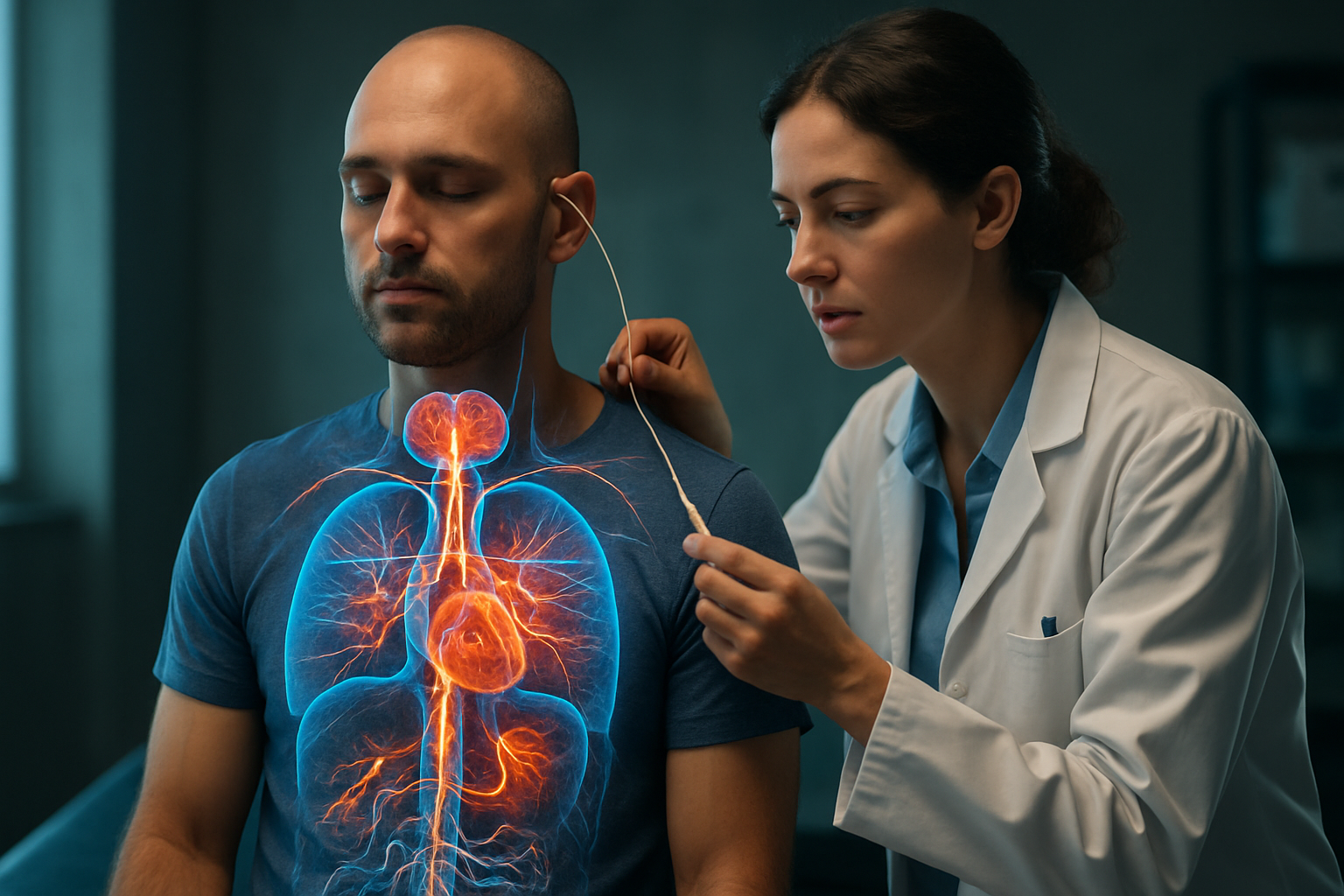Disquieting Signs and Symptoms of Abdominal Aortic Aneurysm!
Abdominal aortic aneurysm (AAA) represents one of the most dangerous cardiovascular conditions that often develops silently over years before manifesting symptoms. This potentially life-threatening condition occurs when the aorta—the largest blood vessel in the body—weakens and bulges in the abdominal region. Understanding the warning signs can literally be the difference between life and death, as ruptured aneurysms have a mortality rate of approximately 80%. Early detection through recognition of symptoms and proper screening is crucial for effective treatment and management of this serious condition.

What Is an Abdominal Aortic Aneurysm?
An abdominal aortic aneurysm develops when the wall of the aorta weakens, creating a bulge or enlargement specifically in the section running through the abdomen. The aorta normally measures about 2 centimeters in diameter, but with an aneurysm, it can expand to over 5.5 centimeters—about the size of a lemon. This expansion progressively weakens the vessel wall, increasing the risk of rupture. AAAs typically form below the kidneys but above the bifurcation where the aorta splits to supply blood to the legs. The primary concern with an abdominal aneurysm is that it may continue to enlarge and eventually rupture, causing life-threatening internal bleeding that requires immediate emergency intervention.
Recognizing Symptoms of Abdominal Aneurysm
Most abdominal aortic aneurysms develop slowly and remain asymptomatic until they become large or rupture. This silent progression makes them particularly dangerous. However, some patients with expanding aneurysms may experience:
-
A pulsating sensation near the navel
-
Deep, persistent abdominal or back pain
-
Tenderness when the abdomen is pressed
-
Unexplained weight loss or loss of appetite
When an aneurysm ruptures, symptoms become severe and unmistakable, including:
-
Sudden, intense abdominal or back pain often described as “tearing”
-
Rapid heart rate and dizziness
-
Clammy, sweaty skin
-
Low blood pressure and shock
-
Loss of consciousness
These emergency signs require immediate medical attention as they indicate a potentially fatal rupture requiring urgent surgical intervention.
Identifying Aneurysm Risk Factors
Understanding who faces increased aneurysm risk is critical for early detection. The primary risk factors for developing an abdominal aortic aneurysm include:
-
Age: Risk increases significantly after age 65
-
Sex: Men are four to five times more likely to develop AAA than women
-
Smoking: The single most significant controllable risk factor
-
Family history: First-degree relatives of AAA patients have a 15-25% higher risk
-
Hypertension: Chronic high blood pressure accelerates aortic wall weakening
-
Atherosclerosis: Hardening of the arteries contributes to aortic wall damage
-
Previous vascular aneurysms: History of other aneurysms increases AAA risk
-
Genetic conditions: Marfan syndrome, Ehlers-Danlos syndrome, and other connective tissue disorders
Risk reduction strategies include smoking cessation, blood pressure management, regular exercise, maintaining healthy cholesterol levels, and following a heart-healthy diet.
Diagnostic Aneurism Tests and Screening
Early detection through appropriate screening can significantly improve outcomes for those at risk of AAA. Common diagnostic tests include:
-
Abdominal ultrasound: The primary screening tool, non-invasive and highly effective at identifying AAAs
-
CT scan: Provides detailed images of the aneurysm size, shape, and involvement of nearby structures
-
MRI: Offers excellent soft tissue visualization without radiation exposure
-
Aortography: Involves injecting contrast dye to visualize blood flow through the aorta
The U.S. Preventive Services Task Force recommends one-time screening for men aged 65-75 who have ever smoked. Some physicians also recommend screening for men over 60 with a family history of AAA and selective screening for women with risk factors. Regular monitoring through imaging becomes essential once an aneurysm is detected, with frequency determined by the aneurysm’s size and growth rate.
Comprehensive Aneurysm Treatment Options
Treatment decisions for abdominal aortic aneurysms depend primarily on size, growth rate, and the patient’s overall health. The main approaches include:
Watchful Waiting
For small aneurysms (less than 5.5 cm in men or 5.0 cm in women), physicians typically recommend:
-
Regular imaging every 6-12 months to monitor growth
-
Risk factor modification through lifestyle changes and medication
-
Blood pressure control to reduce pressure on the aortic wall
Endovascular Aneurysm Repair (EVAR)
This minimally invasive procedure has become the preferred treatment for many patients:
-
Involves inserting a stent-graft through small groin incisions
-
The stent reinforces the weakened aortic wall
-
Requires shorter hospital stays (1-3 days) and recovery periods
-
Necessitates lifelong imaging follow-up
Open Surgical Repair
Traditional surgery may be necessary for complex cases:
-
Requires a large abdominal incision to access the aorta
-
The damaged section is replaced with a synthetic graft
-
Involves longer hospital stays (5-10 days) and recovery periods
-
Generally provides more durable long-term results for younger patients
Cost Considerations for Aneurysm Treatment
Treating an abdominal aortic aneurysm involves substantial costs that vary depending on the approach, facility, and patient’s health insurance coverage. Understanding these expenses can help patients better prepare financially.
| Treatment Approach | Average Hospital Cost | Patient Out-of-Pocket Cost (with insurance) | Recovery Time |
|---|---|---|---|
| EVAR Procedure | $30,000-$40,000 | $1,000-$5,000 | 1-2 weeks |
| Open Surgical Repair | $35,000-$50,000 | $2,000-$8,000 | 4-6 weeks |
| Annual Monitoring (no surgery) | $500-$2,000/year | $50-$500/year | N/A |
| Emergency Rupture Repair | $100,000+ | Varies significantly | 2-3 months |
Prices, rates, or cost estimates mentioned in this article are based on the latest available information but may change over time. Independent research is advised before making financial decisions.
Medicare and most private insurance plans cover screening for eligible individuals and will typically cover a significant portion of necessary treatment costs. However, patients should verify coverage specifics, including deductibles, copayments, and coverage limitations before proceeding with any treatment option.
The Importance of Timely Intervention
The management of abdominal aortic aneurysms exemplifies the critical importance of early detection and appropriate intervention in vascular medicine. Left untreated, large aneurysms can rupture with catastrophic consequences. The mortality rate for ruptured AAAs exceeds 80%, with many patients not surviving long enough to reach the hospital. By contrast, elective repair of known aneurysms carries a mortality rate of just 1-5%, highlighting the value of screening programs for at-risk populations. Recovery from planned procedures is generally good, with most patients returning to normal activities within weeks or months, depending on the surgical approach used.
This article is for informational purposes only and should not be considered medical advice. Please consult a qualified healthcare professional for personalized guidance and treatment.




